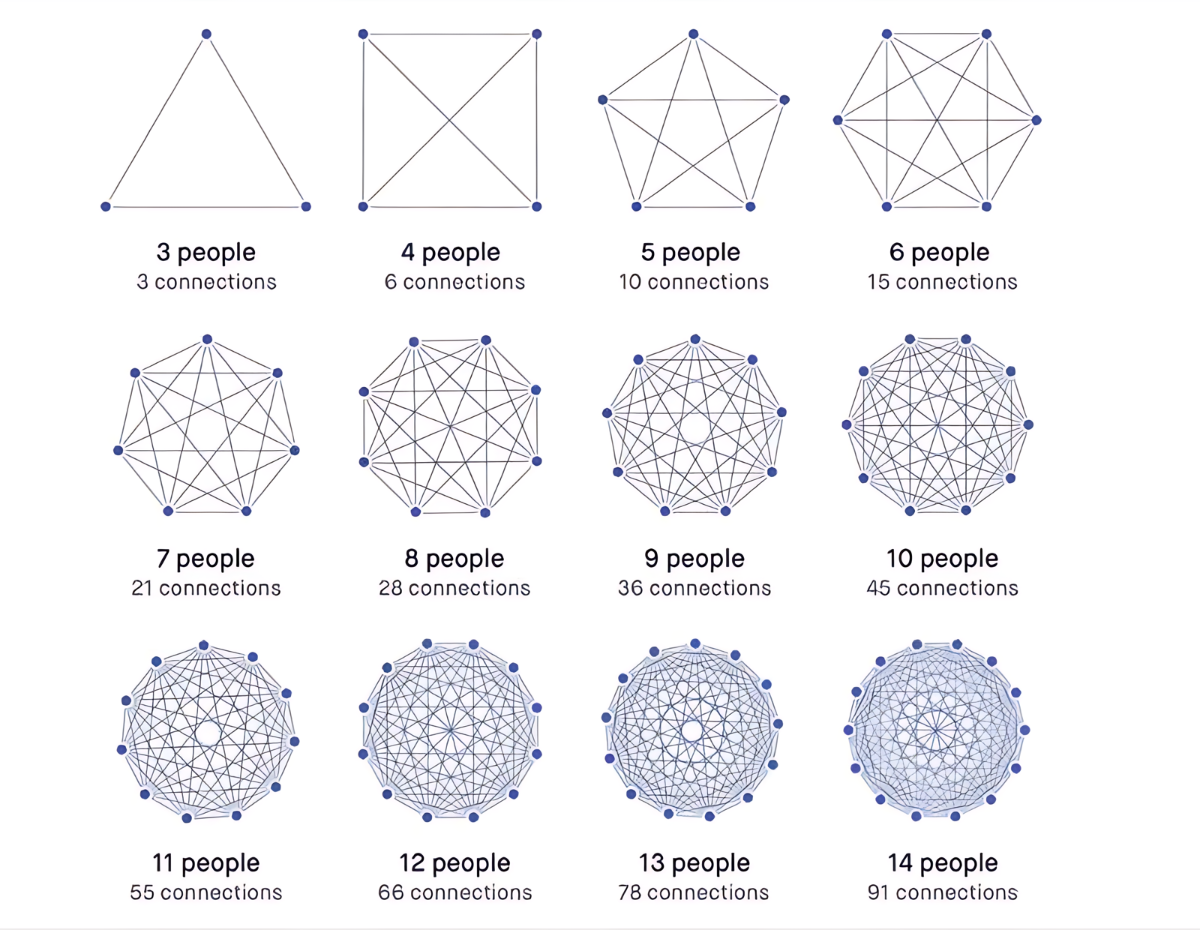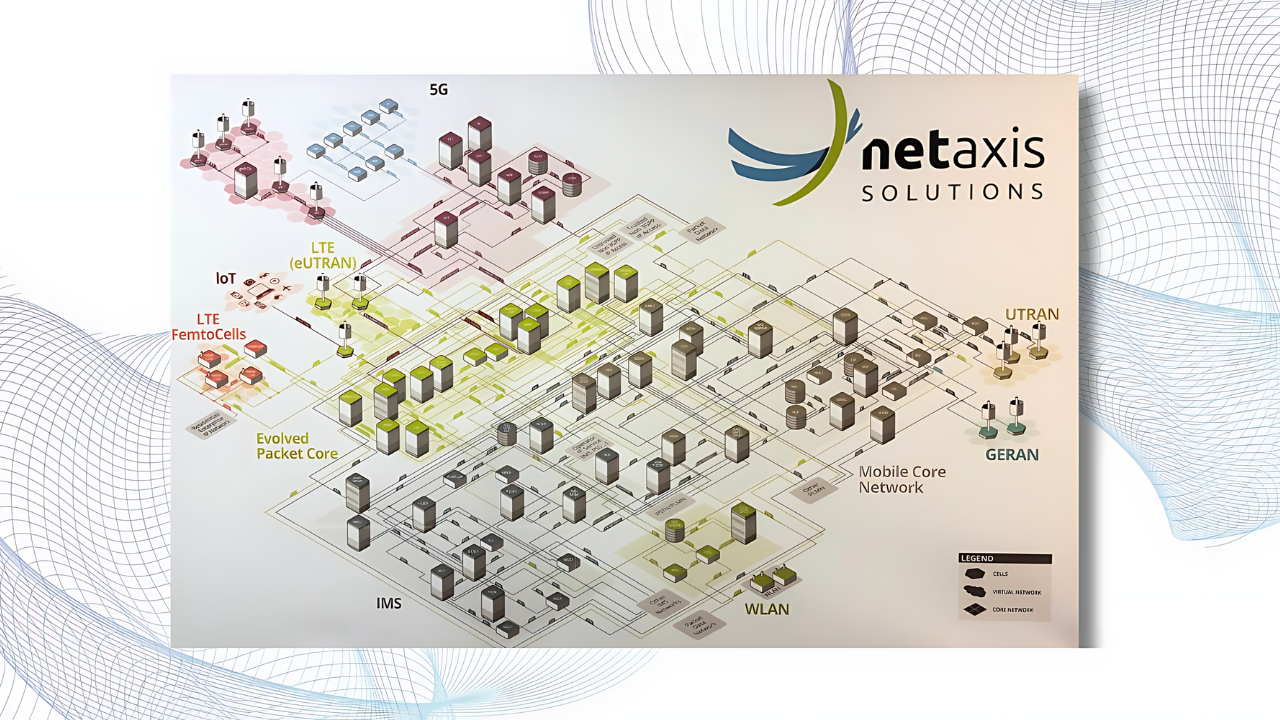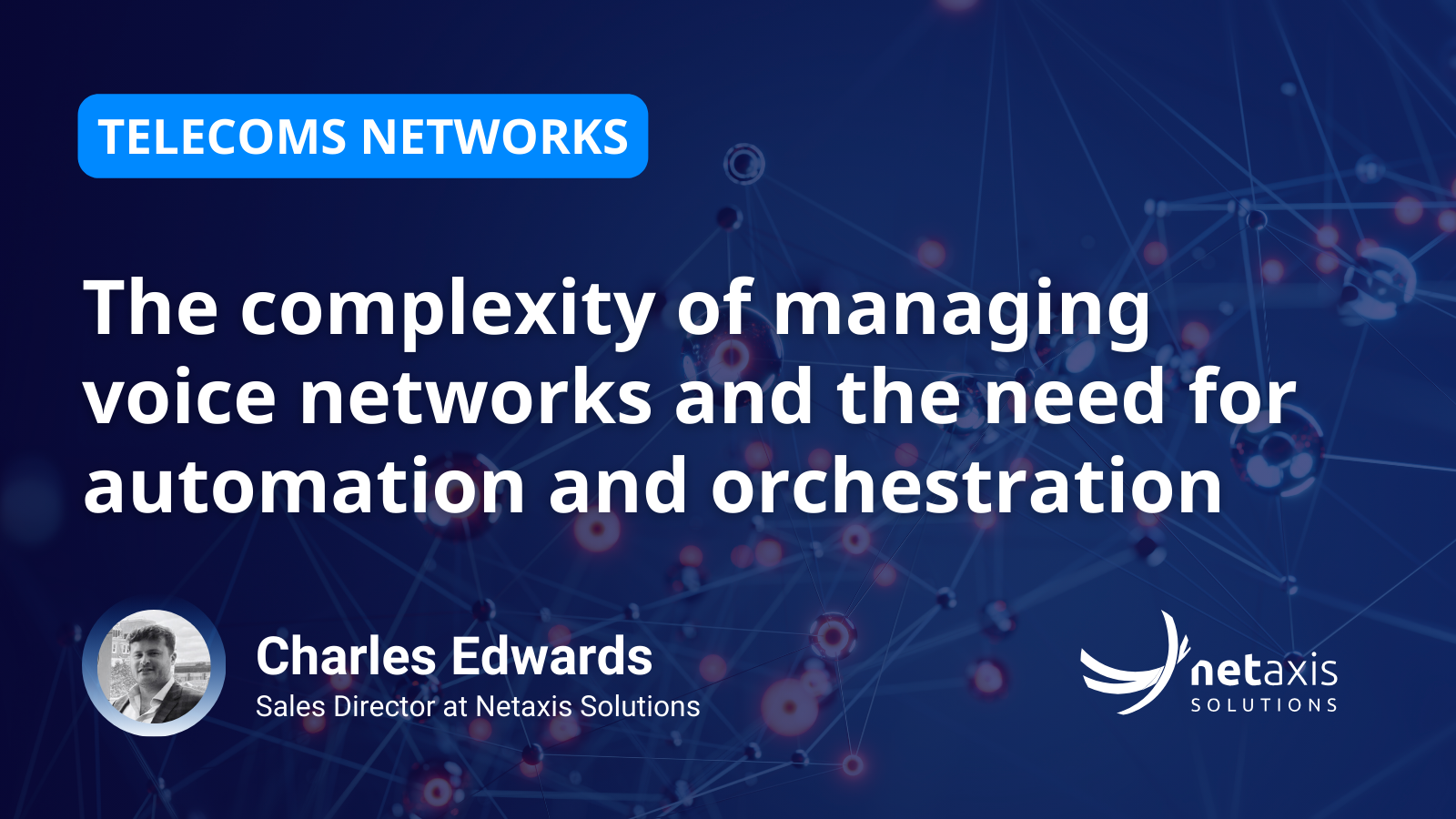The complexity of managing teams is well known, and this is equally valid for teams managing telecom networks. Network elements by themselves require deep expertise and a significant amount of alignment especially when manual interventions are required. The larger a team, the more alignment is often needed, driven by the number of connections (and network elements). One way to reduce this need for constant alignment is to have a clear strategy and alignment as well as well documented handovers in the processes. While this takes time and effort, it results in significant benefits, including more focused time and fewer unnecessary alignment activities.

How technology and streamlining through automation reduces the number of interactions
The management of network elements and routing is a task that becomes exponentially complex as the number of nodes in the network increases. This complexity is conceptually similar in the accompanying image, which shows how the number of connections grows with the number of nodes in a network. For instance, a network with 3 nodes has 3 connections, while a network with 14 nodes has potentially 91 connections. This exponential growth in connections highlights the need for advanced automation and orchestration tools to manage networks efficiently.
The challenge of network complexity

In a network, each node represents a device or an endpoint, and each connection signifies a possible communication path between two nodes. As the network grows, the number of potential connections increases rapidly, making manual management impractical. The image clearly demonstrates this escalation in complexity.
With each additional node, the number of possible connections increases, creating a highly intricate web of interactions. Managing these connections manually is not only cumbersome but also prone to errors and inefficiencies.
The role of automation and orchestration
To address the growing complexity, automation and orchestration tools are essential. Automation involves using software to perform tasks without human intervention, while orchestration refers to the coordination and management of automated processes to achieve a cohesive and efficient operation. These tools are crucial for several reasons:
- Scalability: Automation and orchestration platforms can handle the increasing number of nodes and connections, ensuring that the network operates smoothly regardless of its size.
- Efficiency: Automated processes reduce the time and effort required to manage network elements, allowing for faster deployment and maintenance.
- Consistency: Automation ensures that tasks are performed consistently and accurately, reducing the likelihood of human error.
- Lifecycle management: End-to-end automation starts with the onboarding of new customers and extends throughout the entire lifecycle, including monitoring, updating, and troubleshooting.
- Liberate time: Automation and orchestration platforms liberate time of the experts to focus on what really matters.
Netaxis: Simplifying, automating, and orchestrating telecoms networks
Netaxis is at the forefront of network automation and orchestration with its APIO and SRE platforms. These tools are designed to simplify the management of complex networks by automating routine tasks and orchestrating various processes. Here’s how Netaxis addresses the challenges of network management:
- APIO (API Orchestration): This platform automates the integration of different network elements and services through APIs. It ensures seamless communication and coordination between various components, reducing manual intervention and increasing efficiency.
- SRE (Service Routing Engine): This platform focuses on maintaining the reliability and performance of network services. It automates monitoring, incident management, and resolution processes, ensuring that the network remains stable and efficient.
As the number of nodes in a network increases, the complexity of managing the network grows exponentially. Automation and orchestration tools are indispensable for handling this complexity, ensuring that networks are scalable, efficient, and reliable. Netaxis, through its APIO and SRE platforms, provides the necessary tools to simplify, automate, and orchestrate network management, enabling businesses to focus on their core operations while maintaining a robust and efficient network infrastructure.





